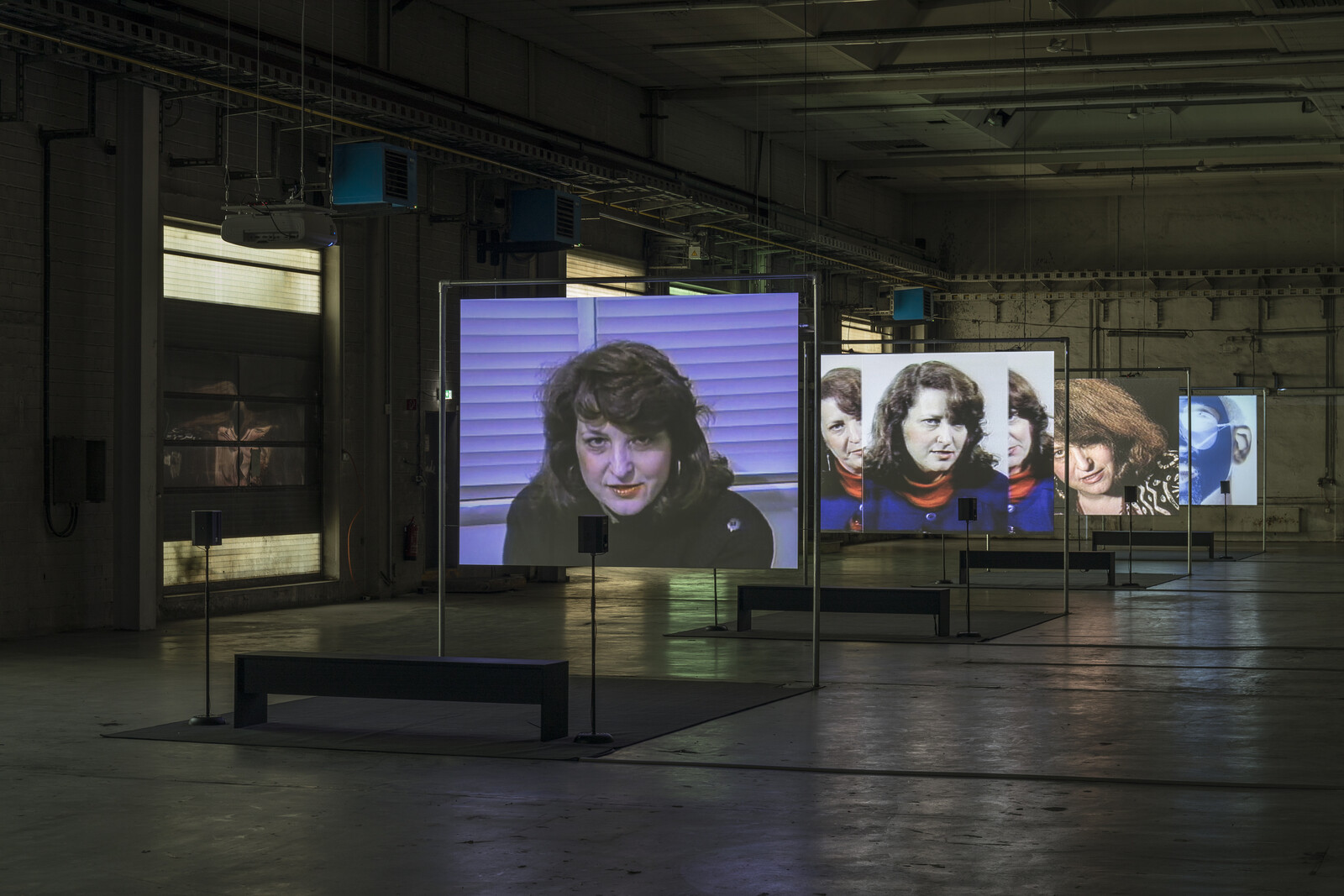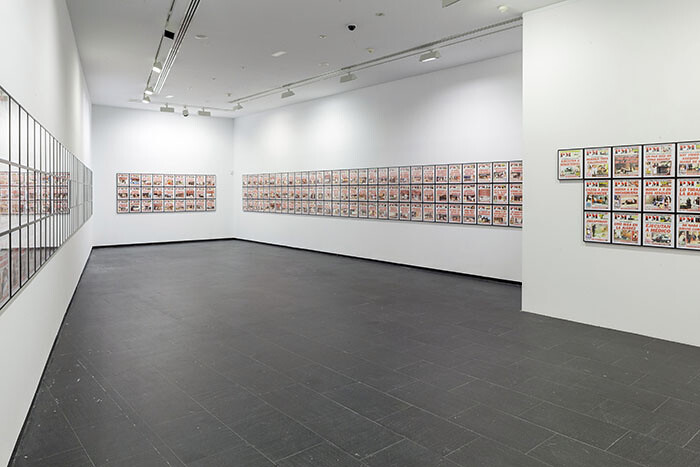Categories
Subjects
Authors
Artists
Venues
Locations
Calendar
Filter
Done
April 18, 2019 – Review
Lynn Hershman Leeson’s “First Person Plural”
Stefanie Hessler

Who was Lynn Hershman Leeson between 1965 and 1994? The Centro de Arte Dos de Mayo (CA2M) in Móstoles, a city just southwest of Madrid, is showing “First Person Plural,” focusing on three decades of Hershman Leeson’s oeuvre. The exhibition pivots on questions of identity, technology, and the female, or rather woman-identified, body. As the title suggests, in sidestepping fixed notions of identity of herself as a person and as a woman artist, while considering cyborgian possibilities and the limits of technology, Hershman Leeson’s work today feels relevant and historical at once.
The first work on view in the modest-sized exhibition is The Electronic Diaries of Lynn Hershman Leeson (1984–96), distributed over four screens installed one behind the other. In these confessional and often disturbing video diaries, the artist films herself as she speaks directly to the camera, telling stories of her youth, physical and psychological abuse, binge eating, and trouble with self-acceptance, which are interspersed with sequences of news coverage. The connection of current affairs with diaristic accounts anchors the work in second-wave feminism’s assertion that the personal is political. For instance, a statement of Ronald Reagan dismissing the Iran-Contra affair is followed by Hershman Leeson’s ruminations on lying, betrayal, …
April 23, 2014 – Review
Teresa Margolles’s “El Testigo”
Octavio Zaya

The testimony of the witness still has an important place among many artists and writers who identify their works with activist politics, dissidence, the subaltern, and the liberation strategies particularly favored in the last decade of the twentieth century. However, in these times, in which human testimony has been displaced from prominence by so-called material evidence, and in which psychology has given way to forensics, our attention seems to be directed away from the subjective aspects of evidence: the ambiguities and anxiety with which trauma and memory inevitably perfuse the account of the victim. This displacement is already pervasive in the field of law as much as it is in politics, the social sciences, and the entertainment industry, as we have increasingly seen with the influence of DNA, 3D scanners, and satellite surveillance, or in the popularity of the crime novels of Patricia Cornwell and Kathy Reichs, or the CSI television series. The current exhibition of Mexican artist Teresa Margolles at the Centro de Arte Dos de Mayo (CA2M) in Madrid embraces this cultural shift in unexpected ways, without placing itself outside the frame of testimony.
Curated by María Inés Rodríguez, Margolles’s “El Testigo,” which means “the witness,” is one of …